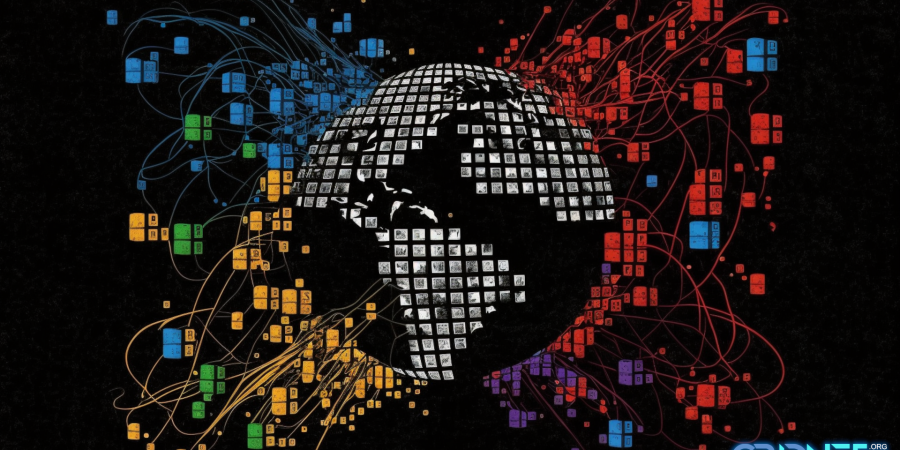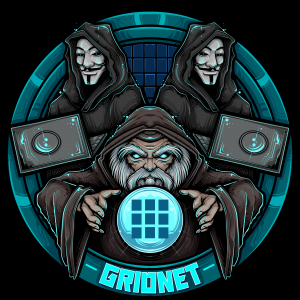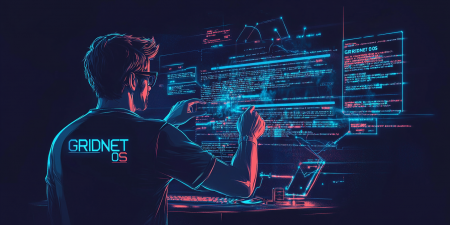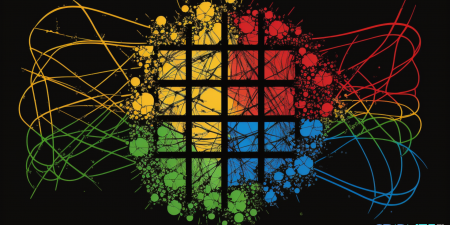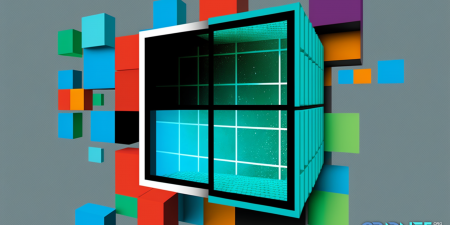Introduction
Throughout history, voting has played a crucial role in shaping societies and driving progress. It has allowed people to voice their opinions and participate in the decision-making process, fostering a sense of inclusion and empowerment. In a democratic society, voting allows citizens to choose their representatives and influence the direction their country takes. It has paved the way for civil rights movements, the expansion of social services, and the enactment of policies that promote equality and justice.

We may feel just fine in the freedom oriented future.
With the advancements in technology, we are now witnessing a paradigm shift towards decentralized voting and consensus mechanisms. This transition empowers individuals and communities by eliminating the need for centralized authorities and providing more transparent and accountable decision-making processes. Decentralized voting systems, such as those built on blockchain technology, offer the potential for secure, tamper-proof, and auditable elections, mitigating the risks of fraud and corruption.
It is crucial for us to analyze all the facts and resort to logical thinking when considering the potential of decentralized voting systems. There will always be those who wish to maintain power and control, whether at the governmental level or atop censorship-oriented social media platforms. However, the march of progress is undeniable, and as we’ve seen with the rise of cryptocurrencies, once-dismissed concepts can evolve into powerful tools for change. The Bitcoin Pizza Day, where a person spent what is now considered an immense fortune on a pizza, serves as a reminder of how transformative ideas can emerge from humble beginnings.
As we continue to explore and develop decentralized voting mechanisms, we must remain vigilant and adaptive, ensuring that these systems maintain the principles of transparency, security, and inclusiveness. By doing so, we can embrace the potential of decentralized consensus and contribute to a fairer and more equitable future for all. GRIDNET OS aims to become synonymous with Decentralized Autonomous Organization (DAO) based services and social media platforms, by integrating and orchestrating cutting-edge technologies that provide a seamless, decentralized experience for users.
One such innovation is our decentralized data-presentation layer, which enables the delivery of user interface components without relying on a centralized server. This approach ensures a truly decentralized experience, allowing users to interact with the platform without any intermediaries. Another notable feature is our crypto-incentivized cross-browser communication, showcased in the eMeeting UI dApp. This dApp employs our unique state-of-the-art Zero Knowledge Proof group authorization protocol, allong with the very first implementation of fully decentralized WebRTC signaling (no other project has that kind of technology) – as a result facilitating end-to-end encrypted audio/video streams and screen sharing without the need for a centralized server. This capability ensures secure and private communication across the platform.

Unprecedented architecture allows for unprecedented use-case scenarios and possibilities.
We recognize the importance of implementing a robust and sophisticated decentralized voting system, as it serves as a foundation for various applications and user scenarios. That’s why we’ve designed a groundbreaking voting mechanism, integrated directly into the Security Descriptors of files and folders on GRIDNET OS’ decentralized file system. This integration allows for unprecedented functionality and use cases. Imagine decentralized alternatives to popular platforms like Reddit, YouTube, and Twitter, where users can participate in decision-making processes, content moderation, and asset allocation without the need for centralized control. The potential for innovation and user empowerment is immense, as communities can self-govern and make decisions collectively.
By continuously pushing the boundaries of technology, GRIDNET OS strives to create a decentralized ecosystem where users can enjoy secure, transparent, and equitable services. Our commitment to innovation will enable us to create a new generation of social media platforms and DAO-based services, fostering a more democratic and inclusive digital landscape.
Preliminaries: all the mechanics described here-in are operational on the ⋮⋮⋮ Test-Net. While the article provided an in-depth outlook of the possibilities, user is always encouraged to look into the official man-page of the ‘poll’ utility available by executing poll –help from the ⋮⋮⋮ Virtual Terminal interface. GridScript++ developer may already seamlessly integrate Polling API facilities by using the evalGS() command.

1.1. The Importance of Decentralized Decision-Making
Decentralized decision-making is a crucial aspect of modern digital ecosystems, especially when it comes to blockchain and distributed ledger technologies. By empowering individuals and communities to participate actively in various decision-making processes, decentralized systems enable a more democratic, transparent, and accountable environment.
The importance of decentralized decision-making lies in its ability to:
- Foster trust and cooperation: Decentralized systems eliminate the need for a central authority, which often leads to increased trust and cooperation among users. Users can engage in decision-making processes without the fear of manipulation or bias, knowing that their voices are equally valued.
- Enhance inclusivity and diversity: Decentralized decision-making allows for broader participation from a diverse range of individuals, ensuring that decisions are not solely dictated by a few dominant parties. This inclusivity leads to more innovative and well-rounded outcomes that cater to a wider array of needs and perspectives.
- Promote transparency and accountability: In a decentralized system, actions and decisions are recorded on a distributed ledger, making the decision-making process transparent and verifiable. This accountability helps prevent fraud and corruption, as well as fosters trust among users.
- Encourage innovation and adaptability: Decentralized decision-making enables a more agile and adaptable system, where changes can be proposed, debated, and implemented quickly. This adaptability allows for continuous improvement and fosters innovation, as participants can freely experiment with new ideas and solutions.
- Increase resilience and stability: Decentralized systems are inherently more resilient and stable, as they are not reliant on a single point of failure. Decision-making power is distributed among users, ensuring that the system can continue to function even if certain nodes or participants are compromised.
In summary, decentralized decision-making plays a vital role in creating digital ecosystems that are fair, transparent, and inclusive. By leveraging the capabilities of the Polling API in GridScript 1.0, developers can harness these benefits and create robust applications that promote democratic and accountable decision-making processes.
1.2. Brief overview of GridScript 1.0 and the Voting API

Technology might be shaping the future but we decide in which direction.
GridScript 1.0 is a powerful scripting language designed to facilitate the development of decentralized applications (dApps) on the GRIDNET platform. It provides developers with a comprehensive set of tools and features to create, deploy, and manage dApps that operate within the GRIDNET ecosystem.
One of the key components of GridScript 1.0 is the Voting API, which enables developers to create and manage decentralized voting and polling systems. The Voting API is built around the concept of polls, which can be associated with any object in the decentralized file system. Polls allow users to participate in various decision-making processes, such as electing representatives, approving proposals, or managing access rights to resources.
The Voting API in GridScript 1.0 offers the following features:
- Poll creation and management: Developers can easily create, modify, and activate polls associated with various objects in the decentralized file system. Polls can be customized with specific thresholds, voting powers, and durations.
- Two-tier voting system: The Voting API supports a two-tier voting system, where Level-1 voters can become candidates, and Level-2 voters can back Level-1 candidates. This system enables a more complex decision-making process, allowing for the emergence of representatives or influential participants.
- Flexible voting power allocation: Voting power in the Voting API is determined by the amount of GRIDNET Coins (GNC) sacrificed during the Identity Token registration process. This mechanism ensures that users who are more invested in the system have a greater influence on decision-making.
- Inheritance and automatic actions: Polls can be inherited down the file-system tree, allowing for hierarchical decision-making structures. Additionally, developers can enable automatic actions based on poll outcomes, such as granting access rights or triggering specific events.
- System and user-defined polls: The Voting API supports both system polls (kernel-mode) and user-defined polls (user-mode). System polls can directly affect access rights and other system-related aspects, while user-defined polls are more flexible and can be used for a variety of purposes within dApps.
By leveraging the Voting API in GridScript 1.0, developers can create sophisticated decentralized decision-making systems that empower users to participate actively in the governance and management of dApps, fostering trust, transparency, and collaboration within the GRIDNET ecosystem.
1.3. Objectives of the article
The primary objectives of this article are to:
- Provide an in-depth understanding of the importance of decentralized decision-making in the context of blockchain and dApps, emphasizing the benefits of empowering users to participate in governance and decision-making processes.
- Offer a comprehensive overview of GridScript 1.0 and its built-in Voting API, highlighting the key features and capabilities that enable the development of versatile and efficient decentralized voting and polling systems.
- Demonstrate the practical applications of the Voting API by providing real-world examples and use cases, showcasing how developers can implement decentralized decision-making systems within their dApps on the GRIDNET platform.
- Explain the technical aspects of the Voting API, including poll creation, management, voting power allocation, inheritance, and automatic actions, as well as the differences between system and user-defined polls.
- Guide developers on how to effectively utilize the Voting API in GridScript 1.0 to create, deploy, and manage decentralized voting systems within their dApps, fostering transparency, trust, and collaboration among users.
By achieving these objectives, the article aims to serve as a valuable resource for developers and enthusiasts interested in building decentralized applications on the GRIDNET platform, enabling them to harness the power of the Voting API to create robust and user-centric decision-making systems.
Understanding the Polling API in GridScript 1.0
In this section, we will take a deep dive into the mechanics and usage of the Polling API within the GRIDNET OS ecosystem. This is where the true potential and benefits of GridScript 1.0 come to the forefront, as it seamlessly combines the power of a sophisticated programming language like GridScript++ with the simplicity and accessibility of a command-line interface.
The Polling API in GridScript 1.0 is designed with user-friendliness in mind, catering to a wide range of users without requiring extensive programming knowledge or the installation of complex software. It empowers users to execute powerful commands and interact with the decentralized voting system in a simple and intuitive manner. One of the key features of the Polling API is the ability to authenticate actions using a mobile app through computer vision. This ensures that even non-developers can access and benefit from the advanced capabilities of the system, all while maintaining robust security measures.
Stay with us as we explore the ins and outs of the Polling API in GridScript 1.0, and discover how it revolutionizes decentralized decision-making for users from all walks of life. With the power of GRIDNET OS at your fingertips, you’ll be able to harness the true potential of decentralized voting and create a more equitable and democratic digital world.

GRIDNET OS – based decentralized autonomous organizations.
2.1. Overview of the ‘poll’ command
The ‘poll’ command is an essential utility in GridScript 1.0, designed to interact with the Voting API and facilitate the creation and management of polls within decentralized applications on the GRIDNET platform. By providing a range of options and functionalities, the ‘poll’ command enables developers to create and control voting systems that cater to various use cases.
The primary functions of the ‘poll’ command include:
- Creating new polls: Developers can associate polls with objects on the decentralized file system, such as files, directories, or state-domains. Polls can be user-defined or system-defined, each serving specific purposes and having different levels of impact on the system.
- Voting: Users can cast their votes within the specified polls, exercising their voting power based on the number of tokens they have staked. The ‘poll’ command allows users to participate in both Level-1 and Level-2 voting tiers.
- Modifying polls: Before activation, the object owner can modify various poll parameters such as the threshold, the exclusive group, and the human-readable description.
- Activating and deactivating polls: The object owner can activate or deactivate polls, controlling the availability of voting options and triggering the associated actions or events.
- Managing poll states: The ‘poll’ command enables transitions between different poll states like association, activation, triggering, and deactivation, ensuring smooth and efficient voting processes.
- Checking poll status: Users can retrieve information about the current state of a poll, including the number of votes cast, the candidates, and the voting power distribution.
By offering these functionalities, the ‘poll’ command in GridScript 1.0 empowers developers to create, deploy, and manage versatile and efficient decentralized voting systems, fostering user participation and transparent decision-making processes within their applications.
2.2. Key features and requirements
The key feature is freedom. The requirement is a will to act. – the Old Wizard🧙♂️ once said.

Feeling good in our own skin, making our own choices..
The ‘poll’ command in GridScript 1.0 offers several key features and requirements that facilitate the development of decentralized voting systems. These include:
- Identity Token Requirement: To create new polls or vote in existing ones, users must own an Identity Token and be logged in. This requirement ensures that participants are authenticated and have a verifiable stake in the system.
- Voting Power: A user’s voting power is directly proportional to the amount of GBUs (GNC) staked during the creation of their GRIDNET Identity Token. This stake-based voting power system ensures that participants with higher contributions to the network have a greater say in decision-making.
- Poll Types: The ‘poll’ command supports two types of polls – system polls (kernel-mode) and user-defined polls (user-mode). System polls affect access rights and privileges associated with objects, while user-defined polls do not directly modify system parameters and are more flexible in their applications.
- Inheritance: By default, polls are inherited down the file-system tree, allowing objects to receive distinct poll-states from their parent objects. Developers can choose to disable inheritance for specific folders using the ‘noinheritance’ option.
- Poll Lifespan: A poll can run indefinitely by default, or developers can set specific conditions for its deactivation using the ‘once’ flag, which deactivates the poll after a winner is proclaimed.
- Automatic Actions: Developers can enable automatic actions in system polls, triggering default actions (e.g., file removal or ownership transfer) when a poll reaches the predefined threshold voting power.
- Exclusive Groups: The ‘poll’ command allows the creation of exclusive groups, wherein only one member can be voted for after any poll-element reaches the threshold value.
- Customization: Developers have the flexibility to customize various aspects of a poll, such as thresholds, descriptions, and the association of human-readable descriptions with poll-elements.
- Retrieval of Poll Status: The ‘poll’ command allows users to check the status of a poll, providing valuable information about the poll’s state and the distribution of votes.
These key features and requirements make the ‘poll’ command a powerful tool for developers to create, deploy, and manage decentralized voting systems on the GRIDNET platform, fostering transparent decision-making and user engagement.
2.3. Poll types: System polls vs. user-defined polls
The ‘poll’ command in GridScript 1.0 supports two types of polls, each with distinct characteristics and use cases. Understanding the differences between system polls and user-defined polls is crucial when implementing decentralized voting systems.
System Polls (Kernel-mode):
- These polls directly impact access rights and privileges associated with objects on the decentralized file system.
- They have predefined identifiers (IDs) less than 10.
- System polls can automatically trigger actions (e.g., file removal, ownership transfer) when the predefined threshold voting power is reached.
- Examples of system polls include: Write access (ID 0), Execution privileges (ID 1), Ownership transfer (ID 2), Object removal (ID 3), Asset control (ID 4)
User-defined Polls (User-mode):
- These polls do not directly modify system parameters, providing more flexibility in their applications.
- By default, user-defined polls have the lowest available identifier (ID 10 or higher).
- They do not trigger system events automatically. However, their results can influence the system through other programs or user actions.
- User-defined polls can be employed for various purposes, such as community decision-making, project governance, or feature prioritization.
In summary, system polls are designed to manage access rights and privileges within the decentralized file system, while user-defined polls cater to a broader range of applications. Choosing the appropriate poll type depends on the specific requirements of the voting system being implemented.
2.4. Poll inheritance and lifespan
Inheritance and lifespan are essential aspects of the ‘poll’ command in GridScript 1.0, as they define how polls propagate through the file system and how long they remain active. Understanding these concepts is vital for effectively managing decentralized voting systems.
Poll Inheritance:
- By default, polls are inherited down the file-system tree. When a new object is created, it receives a distinct poll-state based on its parent object’s poll.
- Inherited polls have their voters and votes cleared, ensuring that each object’s poll starts fresh.
- The state of activity is preserved during inheritance, but the ‘triggered’ flag is always cleared.
- Users can disable poll inheritance for specific folders using the ‘-noinheritance’ flag.
Poll Lifespan:
- A poll’s lifespan can be divided into several stages: Association, Activation, Triggering, and Deactivation.
- By default, a poll runs indefinitely unless specified otherwise, allowing multiple winners to be elected over time.
- Users can set the ‘-once’ flag to elect only one winner, after which the poll is concluded and deactivated.
- The ‘-auto’ flag enables automatic actions, such as file removal or ownership transfer, once the voting threshold is reached. This flag can streamline the poll process and minimize manual intervention.
Poll inheritance and lifespan dictate how polls are passed down through the decentralized file system and how long they remain active. Properly managing these aspects ensures that the voting system is efficient, secure, and adaptable to various use cases.
Setting Up and Managing Polls
3.1. Creating a new poll
Lets’ get started. Let’s create our very first GRDINET OS based decentralized poll. How difficult could it be ? Would it?

Packed with technology..
Creating a new poll using the GridScript 1.0 ‘poll’ command is straightforward and customizable. To set up a poll associated with an object in the decentralized file system, follow these steps:
- Choose the object: Select the file, directory, or state-domain you want to associate with the poll.
- Use the ‘-create’ flag: The ‘-create’ flag is used to create and associate a new poll with the selected object. This flag is essential for initiating the poll creation process.
- Specify poll type: Decide whether you want to create a system poll or a user-defined poll. System polls affect access rights associated with objects, while user-defined polls are agnostic to the system and do not trigger any system events. By default, the ‘poll’ command creates a user-defined poll with the lowest available identifier (10).
- Set poll attributes: Customize the poll by setting various attributes, such as:
Threshold: Use the ‘-threshold’ flag to define the required voting power for a winner to be proclaimed. By default, the threshold is set in GNC, but you can use the ‘-GBU’ flag to set it in GBUs.Exclusive Group: Use the ‘-exclusive’ flag to create an exclusive group for the poll, ensuring that only one member can be voted for once any poll-element reaches the threshold value.Description: Attach a human-readable description to the poll using the ‘-description’ flag. - Example of poll creation:
poll file.txt -create -write -threshold 30
In this example, a new poll is created for the “file.txt” object, granting write access to the winner, with a threshold of 30 GNC.
Here are more examples of creating polls using the ‘poll’ command in GridScript 1.0:
- Create a poll for changing ownership with a threshold specified in GBUs:
poll file.txt create -ownership -threshold 1000 -GBU
In this example, a poll is created for the “file.txt” object, and the winner will gain ownership. The threshold is set to 1000 GBUs. - Create an exclusive group poll with a custom identifier and description:
poll proposal.txt -create -exclusive -threshold 10 id 11 -description 'Increase the cost of ERG to 5 GBUs'
This example creates a member of an exclusive group with ID 11, associated with the “proposal.txt” object. The threshold is set to 10 GNC, and the poll has a description, “Increase the cost of ERG to 5 GBUs.” - Create a system poll for removing a file with automatic actions enabled:
poll file.txt -create -remove -threshold 50 -auto
This example creates a poll for the “file.txt” object to be removed. The threshold is set to 50 GNC, and the ‘-auto’ flag ensures that the file will be removed automatically once the threshold is reached. - Create a poll associated with a user’s state-domain:
poll create -assets -threshold 1000 -GBU -account
In this example, a poll is created and associated with the caller’s state-domain. The winner will gain control over the assets, and the threshold is set to 1000 GBUs. - Create multiple system polls simultaneously for a file:
poll file.txt create write execute -ownership -threshold 100
This example creates three system polls for the “file.txt” object: one for write access, one for execution privileges, and one for ownership transfer. The threshold for each poll is set to 100 GNC.
These examples showcase the flexibility and customization options provided by the ‘poll’ command in GridScript 1.0, allowing you to create a wide range of polls tailored to your specific requirements.
3.2. Modifying a poll
In GridScript 1.0, modifying a poll can be done by invoking the ‘poll’ command with the desired options. However, keep in mind that a poll can only be modified by the owner and only until the poll has been activated. Once the poll is activated, only voting operations are allowed. To modify a poll, you can use consecutive invocations of the ‘poll’ utility, with new invocations possibly overriding prior settings.
Here are some examples of modifying polls using the ‘poll’ command:
- Update the threshold of an existing poll:
poll file.txt create write -threshold 60
This example updates the threshold of the write access poll for the “file.txt” object to 60 GNC. - Change a poll’s description:
poll proposal.txt id 11 -description 'New proposal description'
In this example, the description of the poll with ID 11 associated with the “proposal.txt” object is updated to “New proposal description.” - Enable automatic actions for an existing poll:
poll file.txt -id 0 -auto
This example enables automatic actions for the poll with ID 0 (write access) associated with the “file.txt” object. - Modify a poll to be associated with the user’s state-domain:
poll id 4 -account
In this example, the poll with ID 4 (assets control) is updated to be associated with the caller’s state-domain.
Remember that, for these modifications to take effect, the poll must not be activated yet. Once you’ve made the desired changes, you can activate the poll using the ‘-activate’ flag:
poll file.txt -activate id 0
This command activates the poll with ID 0 (write access) associated with the “file.txt” object.
3.3. Activating and deactivating polls
Activating and deactivating polls are essential operations when working with the ‘poll’ command in GridScript 1.0. Activation allows the poll to become operational, and only after activation can users vote within the poll. Deactivation, on the other hand, puts the poll in an inactive state, stopping further voting.
Activating a Poll
One may modify a poll unlimited number of times, until it is activated. Once activated – it lives a life of its own. GRIDNET OS watches and acts upon the results, if needed, when needed.

You’ve got the right to think. You’ve got the right to act. How it fits you.
To activate a poll, use the ‘-activate’ flag along with the ‘poll’ command. You can either activate all inactive polls associated with an object or activate a specific poll using its ID or type. Here are some examples:
- Activate all inactive polls associated with an object:
poll file.txt -activate - Activate a specific poll by its ID:
poll file.txt -activate id 0 - Activate a poll by its type:
poll file.txt -activate -write
Deactivating a Poll
In GridScript 1.0, there isn’t a direct command to deactivate a poll manually. However, you can use the ‘-once’ flag when creating or modifying a poll to ensure it deactivates automatically after the threshold value has been reached for any candidate.
- Create a poll that deactivates after reaching the threshold:
poll file.txt create write -threshold 50 -once - Modify an existing poll to deactivate after reaching the threshold:
poll file.txt id 0 -once
After the threshold value has been reached, the ‘winner’ will be proclaimed, and the poll will be deactivated automatically.
3.4. Checking poll status
Checking the poll status is an essential operation for users to monitor the progress of a poll, observe the current standings, and gather information about the poll’s state. The ‘poll’ command in GridScript 1.0 provides the ‘-status’ flag to retrieve poll status information. The results of this command are made available both on the Stack and returned through the Meta-Data Protocol.
Here are some examples of checking poll status:
- Check the status of all polls associated with an object:
poll file.txt status - Check the status of a specific poll by its ID:
poll file.txt -status id 0 - Check the status of a poll by its type:
poll file.txt status write - Show the status of a specific Level-1 candidate:
poll file.txt status -candidate Bob - Show the status of all Level-1 candidates:
poll file.txt -stats
By checking the poll status, users can stay informed about the ongoing polls and make informed decisions when participating in decentralized decision-making processes within the GridScript environment.
3.5. Voting in a poll
Voting in a poll is a crucial part of participating in the decentralized decision-making process. The ‘poll’ command in GridScript 1.0 provides the ‘-vote’ flag, which allows users to cast their votes within a specified poll. Users can vote as Level-1 candidates or Level-2 voters backing a Level-1 candidate.
Here are some examples of voting in a poll:
- Vote in the first available user-defined poll (ID >= 10) associated with an object:
poll file.txt -vote - Vote in a specific poll by its ID:
poll file.txt -vote id 14 - Vote for a file to be removed (valid only if such a poll is active):
poll file.txt -vote -remove - Vote for a user (e.g., Bob) to become the owner of a file in an ownership poll:
poll file.txt -vote -ownership -candidate Bob - Vote as a Level-2 voter, backing a Level-1 candidate (e.g., Bob) in an ownership poll:
poll file.txt -vote -ownership -candidate Bob
By voting in polls, users can actively contribute to the decision-making process within the GridScript environment, impacting the future state of files, directories, and other elements of the decentralized file system.
4.0. Deep Dive: Two-Tier Voting System
4.1. Level-1 and Level-2 voters
In the GridScript 1.0 Voting API, there are two levels of voters: Level-1 voters and Level-2 voters. These levels play a role in the two-tier voting system, which adds an extra layer of support and flexibility in the decision-making process.
- Level-1 Voters: Level-1 voters are the primary participants in a poll. They cast their votes directly for themselves or for a specific outcome in the poll. Their voting power is determined by the amount of GBUs (GNC) that were sacrificed to create the GRIDNET Identity Token associated with their State-Domain.
- Level-2 Voters: Level-2 voters, on the other hand, do not vote directly for a specific outcome or candidate. Instead, they back Level-1 voters by casting their votes in support of them. By backing a Level-1 voter, Level-2 voters increase the total voting power of the Level-1 voter they support, giving them a better chance of winning the poll or achieving the desired outcome.
For example, if Bob is a Level-1 voter with a voting power of 10, and ten Level-2 voters each with a voting power of 10 back him, Bob’s resulting voting power becomes 110 (10 + 10 * 10). In this scenario, Bob effectively becomes a strong candidate who can be elected by others. Bob becomes a candidate by issuing a Level-1 vote, while others vote for Bob by issuing Level-2 votes.
This two-tier voting system allows for more dynamic and nuanced decision-making, as it encourages collaboration between voters and the formation of supportive groups that can influence the outcome of a poll.
A two-tier voting system can be employed to create decentralized social platforms where the community has the power to decide which content, posts, images, videos, and comments should be published, and which should not. By leveraging the GridScript 1.0 Voting API, these platforms can become self-regulated, ensuring that the community has a direct say in shaping its own digital environment.
Here’s how such a decentralized social platform could be implemented using the GridScript 1.0 Voting API:
- Content Structure: The content on the platform, such as posts, videos, and comments, can be assigned as files on the GRIDNET operating system. Meanwhile, decentralized forums, sub-forums, or even threads can be represented as ‘folders’ within the system.
- Ownership and Write Permissions: The creators of the decentralized social platform can set up a single state-domain that hosts the content structure. They can then resign from ownership privileges of particular folders and grant write permissions to all users. This approach allows users to create and edit content without central oversight.
- Inheritable Polls and Decentralized Governance: By enabling inheritable polls for folders (forums, sub-forums, and threads), the creators of the platform can give control over the content and moderation to the community. Users can vote on various matters, such as whether a particular post should be published, removed, or modified.
For instance, a user can create a poll to decide if a specific comment should be deleted. If the majority of the community votes in favor, the comment would be removed. This way, the community can self-moderate and decide collectively which content is appropriate and valuable.
- Decentralized Decision-Making: The two-tier voting system ensures that decisions are made collectively and that the community’s voice is heard. Level-1 voters cast their votes directly for specific outcomes or candidates, while Level-2 voters back Level-1 voters, increasing their voting power. This system encourages collaboration, forming supportive groups that can influence the platform’s content and moderation policies.
The GridScript 1.0 Voting API enables the creation of decentralized social platforms where the community takes control of content moderation and decision-making. By implementing a two-tier voting system and inheritable polls, these platforms can become self-regulated, empowering users to shape their own digital space and fostering a sense of collective ownership and responsibility.
4.2. Voting Power and Its Impact on the Voting Process
In the GRIDNET OS, each voter is required to have a registered Identity Token. During the registration process, a certain portion of cryptocurrency is “sacrificed” or consumed, which establishes the user’s voting power. This system helps balance the influence of participants and mitigate potential issues, such as Sybil attacks.

Business-class technology, including Access Control Lists and Security Descriptors associated with objects.
Voting power in the GRIDNET OS plays a crucial role in the voting process:
- Balancing influence: Voting power determines the weight of a user’s vote in polls. By allocating voting power based on the sacrificed cryptocurrency, the system ensures that a single user cannot disproportionately influence the outcome of polls without making a significant investment.
- Candidate nomination: Users with low voting power can still participate in the decision-making process by proposing themselves or others as level-1 candidates. This system allows for a more diverse pool of candidates and encourages participation from all users, regardless of their voting power.
- Sybil attack protection: Requiring users to sacrifice cryptocurrency to obtain an Identity Token and voting power helps protect the system against Sybil attacks. This approach raises the cost of creating fake identities, making it less attractive for attackers to manipulate the outcome of polls.
- Backing level-1 candidates: Users with higher voting power can support level-1 candidates by backing them, effectively transferring some of their voting power to the candidate. This process allows the community to collectively decide which candidates are best suited for level-1 positions, further decentralizing the decision-making process.
- Resource allocation: Voting power can also impact the allocation of resources and rewards within the GRIDNET OS. Users with higher voting power may have a more significant influence on decisions related to resource distribution, ensuring that those who have invested more in the system have a stronger say in its development and governance.
Thus, it can be concluded that voting power in the GRIDNET OS serves as a mechanism to balance influence, protect against Sybil attacks, and encourage participation from all users. By requiring the sacrifice of cryptocurrency for Identity Token registration, the system establishes a fair and secure foundation for decentralized decision-making.
4.3. Use cases and examples of two-tier voting
The two-tier voting system, which comprises level-1 and level-2 voters, offers a versatile and secure decision-making process for a variety of applications. Here, we’ll explore a few use cases and examples where the two-tier voting system can be implemented effectively:

Ready to meet most rigorous access right provisioning requirements, also votable in a decentralized fashion.
- Decentralized Social Platforms: In a decentralized social platform, content (posts, images, videos, and comments) can be represented as files, while forums, sub-forums, and threads can be represented as folders in the GRIDNET OS. The two-tier voting system allows users to collectively govern the platform by assigning level-1 voters as moderators and level-2 voters as the general user base. Moderators (level-1 voters) can manage content and enforce community guidelines, while level-2 voters can participate in polls to influence platform policies and vote on content.
- Decentralized Autonomous Organizations (DAOs): DAOs are organizations that operate based on smart contracts and community consensus. The two-tier voting system can be used to elect board members (level-1 voters) and allow stakeholders (level-2 voters) to participate in decision-making processes. Board members are responsible for proposing and executing decisions, while stakeholders have the power to approve, reject, or modify proposals.
- Decentralized Project Management: In a decentralized project management system, teams can use the two-tier voting structure to assign project leads (level-1 voters) and team members (level-2 voters). Project leads are responsible for setting project goals and assigning tasks, while team members can provide feedback and vote on project direction, resource allocation, and other decisions.
- Decentralized Content Curation: In a content curation platform, the two-tier voting system can be used to elect curators (level-1 voters) and community members (level-2 voters). Curators are responsible for reviewing and approving content submissions, while community members can vote on the quality and relevance of content. This system ensures a fair and transparent content curation process.
- Decentralized Marketplaces: In a decentralized marketplace, the two-tier voting system can be employed to elect administrators (level-1 voters) and users (level-2 voters). Administrators are responsible for managing listings, resolving disputes, and maintaining platform integrity, while users can vote on new features, platform policies, and other decisions that impact the marketplace.
- Decentralized Education Platforms: In a decentralized education platform, the two-tier voting system can be utilized to elect academic committee members (level-1 voters) and students (level-2 voters). The academic committee is responsible for designing curriculums, setting educational policies, and approving course materials, while students can vote on course offerings, extracurricular activities, and other educational decisions.
- Decentralized News Platforms: In a decentralized news platform, the two-tier voting system can be employed to elect editors (level-1 voters) and readers (level-2 voters). Editors are responsible for fact-checking, editing, and approving articles, while readers can vote on the quality, relevance, and credibility of published content. This system ensures a fair and transparent news curation process.
- Decentralized Funding Platforms: In a decentralized funding platform, the two-tier voting system can be used to elect funding committee members (level-1 voters) and project backers (level-2 voters). The funding committee is responsible for evaluating and approving project proposals, while project backers can vote on projects to fund, funding allocation, and other decisions related to crowdfunding or grants.
- Decentralized Healthcare Platforms: In a decentralized healthcare platform, the two-tier voting system can be employed to elect medical board members (level-1 voters) and patients (level-2 voters). Medical board members are responsible for setting healthcare policies, standards, and procedures, while patients can vote on healthcare service offerings, facility improvements, and other decisions impacting patient care.
- Decentralized Environmental Initiatives: In a decentralized environmental initiative, the two-tier voting system can be used to elect environmental committee members (level-1 voters) and community members (level-2 voters). The environmental committee is responsible for setting environmental policies, organizing initiatives, and approving projects, while community members can vote on project priorities, funding allocation, and other decisions related to environmental conservation and sustainability.
- Decentralized Art Platforms: In a decentralized art platform, the two-tier voting system can be employed to elect art curators (level-1 voters) and art enthusiasts (level-2 voters). Art curators are responsible for selecting and approving artworks, organizing exhibitions, and promoting artists, while art enthusiasts can vote on their favorite artworks, exhibition themes, and other decisions related to art appreciation and promotion.
- Decentralized Gaming Platforms: In a decentralized gaming platform, the two-tier voting system can be utilized to elect game developers (level-1 voters) and gamers (level-2 voters). Game developers are responsible for designing, developing, and maintaining games, while gamers can vote on game features, updates, and other decisions impacting the gaming experience.
- Decentralized Event Planning: In a decentralized event planning platform, the two-tier voting system can be used to elect event organizers (level-1 voters) and attendees (level-2 voters). Event organizers are responsible for planning, coordinating, and executing events, while attendees can vote on event themes, locations, dates, and other decisions related to event organization and management.
- Decentralized Scientific Research Platforms: In a decentralized scientific research platform, the two-tier voting system can be employed to elect research committee members (level-1 voters) and researchers (level-2 voters). Research committee members are responsible for setting research policies, approving research proposals, and allocating resources, while researchers can vote on research priorities, collaboration opportunities, and other decisions related to scientific investigations.
- Decentralized Transportation Platforms: In a decentralized transportation platform, the two-tier voting system can be used to elect transportation policymakers (level-1 voters) and commuters (level-2 voters). Transportation policymakers are responsible for setting transportation policies, planning infrastructure projects, and overseeing transportation services, while commuters can vote on transportation service improvements, fare adjustments, and other decisions impacting the transportation experience.
These examples demonstrate the versatility of the two-tier voting system and its ability to support various decentralized applications. By implementing this system, users can maintain a fair, transparent, and secure decision-making process across different platforms and use cases.
5. Automatic Actions and Poll Triggers
While having a robust voting system is essential, it’s the seamless integration with automation and rapid actions that truly brings the benefits of decentralized decision-making to life. The Automatic Actions feature of the Polling API is designed to enable autonomous, timely execution of actions based on the outcomes of polls. This ensures that the desired effects of the voting process are promptly realized, without the need for manual intervention or delays.

Accessible to everyone., with Wizards ready to assist.
5.1. Understanding Automatic Actions in Kernel-Mode Polls
Kernel-mode polls play a vital role in managing access rights and permissions on decentralized platforms using the GRIDNET operating system. One of the key features of kernel-mode polls is the ability to associate automatic actions with them. These automatic actions, which are optional, help streamline the decision-making process and ensure smooth governance transitions.
Automatic actions are triggered once a pre-set threshold for a particular voting option is reached in a kernel-mode poll. When the threshold is met, the corresponding kernel-mode event fires, executing the associated action without the need for manual intervention.
For example, consider a kernel-mode poll associated with the ‘ownership’ permission. If an automatic action is enabled for this poll, once the threshold is reached, the level-1 voter with the highest score would automatically be proclaimed as the file owner. In contrast, without the automatic action, the best candidate would need to use the ‘chown’ GridScript 1.0 command to claim their ownership at a time of their choosing.
Each kernel-mode poll associated with access rights can have an automatic action enabled. These actions simplify the decision-making process, making it more efficient and reducing the likelihood of disputes or delays in governance transitions.
Automatic actions in kernel-mode polls provide a more efficient and streamlined approach to managing access rights and permissions in the GRIDNET operating system. By enabling these actions, decentralized platforms can ensure a smoother and more transparent governance process, ultimately leading to a more secure and inclusive environment for users.
Going further along these lines, Kernel-mode polls play a vital role in managing access rights and permissions on decentralized platforms using the GRIDNET operating system. One of the key features of kernel-mode polls is the ability to associate automatic actions with them. These automatic actions, which are optional, help streamline the decision-making process and ensure smooth governance transitions.
Automatic actions are triggered once a pre-set threshold for a particular voting option is reached in a kernel-mode poll. When the threshold is met, the corresponding kernel-mode event fires, executing the associated action without the need for manual intervention.
For example, consider a kernel-mode poll associated with the ‘ownership’ permission. If an automatic action is enabled for this poll, once the threshold is reached, the level-1 voter with the highest score would automatically be proclaimed as the file owner. In contrast, without the automatic action, the best candidate would need to use the ‘chown’ GridScript 1.0 command to claim their ownership at a time of their choosing.
Each kernel-mode poll associated with access rights can have an automatic action enabled. These actions simplify the decision-making process, making it more efficient and reducing the likelihood of disputes or delays in governance transitions.
Thus, automatic actions in kernel-mode polls provide a more efficient and streamlined approach to managing access rights and permissions in the GRIDNET operating system. By enabling these actions, decentralized platforms can ensure a smoother and more transparent governance process, ultimately leading to a more secure and inclusive environment for users.
5.2. Configuring and Enabling Automatic Actions
In GRIDNET OS, you can configure and enable automatic actions for polls, allowing you to test and interact with them before deploying globally. This is made possible by the pre-authentication capability, which allows users to interact with their creations (including polls) in real-time and see the results before they are made available to the entire system.
To configure and enable automatic actions for polls, you can use the ‘poll’ command with the ‘-auto’ option. The ‘-auto’ option will enable automatic default actions when the voting threshold is reached. By default, the winner is granted dynamic ACE entries, and they may exercise their rights at their sole discretion (during the time they remain the winner). However, with the ‘-auto’ option enabled, the corresponding action will be automatically executed once the threshold is reached.
Here are a few examples using the ‘poll’ command to configure and enable automatic actions:
- Create a poll with automatic action for write access:
poll file.txt -create -write -threshold 30 -auto
- Create a poll with automatic action for ownership transfer:
poll file.txt -create -ownership -threshold 1002342342342342342 -GBU -auto
- Create a poll with automatic action for file removal:
poll file.txt -create -remove -threshold 50 -auto
To test and interact with these polls in real-time, you can use the ‘poll’ command with various options like ‘-vote’, ‘-status’, and ‘-activate’. For instance:
- Vote in the write access poll:
poll file.txt -vote -write
- Check the status of the ownership transfer poll:
poll file.txt status -ownership
- Activate the file removal poll:
poll file.txt -activate -remove
These examples demonstrate how to configure and enable automatic actions for polls in GRIDNET OS using the ‘poll’ command, allowing users to test and interact with their creations in real-time before making them available to the entire system.
5.3. Poll triggers and their implications
Poll triggers in GRIDNET OS are events that occur when a voting threshold is reached in a poll. When a trigger is activated, it can have various implications depending on the type of poll and the automatic actions configured for it. Triggers can affect access rights, ownership, file removal, and other aspects of the system. The implications of poll triggers can be both temporary or permanent, depending on the configuration of the poll and the actions taken by the users involved.
Here are some common poll triggers and their implications:
- Write access trigger: When the voting threshold for a write access poll is reached, the winning user gains write access to the associated object (file or directory). If automatic actions are enabled, the user will immediately have write access. Otherwise, the user will have to exercise their rights at their sole discretion during the time they remain the winner.
- Execute access trigger: Similar to write access, when the voting threshold for an execute access poll is reached, the winner gains execution privileges on the associated object. Automatic actions, if enabled, grant the user immediate execution privileges; otherwise, they can exercise their rights at their discretion.
- Ownership trigger: When the voting threshold for an ownership poll is reached, the winner becomes the owner of the associated object. With automatic actions enabled, ownership transfer occurs immediately. Otherwise, the winner can transfer ownership at their discretion.
- File removal trigger: If the voting threshold for a file removal poll is reached, the winner gains the right to remove the associated file. If automatic actions are enabled, the file is removed immediately upon reaching the threshold. Without automatic actions, the winner can decide when to remove the file while they remain the winner.
- Asset control trigger: When the voting threshold for an asset control poll is reached, the winner gains control over the associated assets. This can affect the control of resources or digital assets tied to a specific object or account.
It is essential to understand the implications of poll triggers, as they can have a significant impact on access rights, ownership, and other aspects of the system. By configuring and enabling automatic actions, users can streamline the processes associated with voting and ensure that the intended actions take place when the triggers are activated.
6.0 Further on Real-World Applications of the Polling API
As we have seen, the Polling API in GridScript 1.0 offers a myriad of possibilities for integrating decentralized voting systems into various real-world applications. The potential for fostering democratic and inclusive decision-making processes is immense, and it is only limited by our imagination.

We share one planet. We need not be looking in same direction, though.
6.1. Decentralized decision-making in organizations
One of the most powerful real-world applications of the Polling API in GRIDNET OS is enabling decentralized decision-making within organizations. By leveraging the voting and polling features of the system, organizations can create a more democratic and transparent decision-making process that fosters collaboration, innovation, and engagement among team members.

Working for your trust each and every day. Delivering. On YouTube LIVE.
Here are some ways in which organizations can use the Polling API for decentralized decision-making:
- Resource allocation: Organizations can create polls to determine how to allocate resources, such as budgets or personnel, for various projects or departments. By allowing team members to vote on allocation proposals, organizations can ensure that resources are distributed according to the collective wisdom and preferences of the team.
- Project prioritization: Teams can use the Polling API to decide which projects to prioritize based on their importance, potential impact, or other criteria. By allowing team members to vote on project priorities, organizations can ensure that the most valuable projects receive the necessary attention and resources.
- Policy and process changes: Organizations can use the Polling API to propose and vote on policy or process changes that impact the entire organization or specific teams. This empowers team members to participate in shaping the rules and processes that govern their work, leading to higher satisfaction and engagement levels.
- Leadership selection: Decentralized decision-making can also be applied to leadership selection within organizations. Teams can use the Polling API to nominate and vote for potential leaders, ensuring that those who hold leadership positions have the support and trust of their team members.
- Innovation and idea generation: The Polling API can be used to gather input and vote on new ideas, innovations, or improvements within the organization. This can help create a culture of innovation and continuous improvement, as team members feel empowered to contribute their ideas and see them brought to life through a democratic process.
- Conflict resolution: In cases where disagreements arise within a team, the Polling API can be used to resolve conflicts by allowing team members to vote on possible solutions. This can help ensure that conflicts are resolved fairly and efficiently, with the input of all relevant stakeholders.
By utilizing the Polling API in these and other ways, organizations can foster a more decentralized and democratic decision-making process, empowering team members to take an active role in shaping the direction of their organization. This can lead to higher levels of engagement, satisfaction, and overall success for both the organization and its members.
6.2. Community-driven content moderation
In today’s world, we are all too familiar with the frustrations and limitations imposed by centralized social media platforms. They dictate what we can read, how we think, and often hold the power to silence our voices when they don’t align with their agenda. Many of us have spent years building our social media presence, only to have it taken away in an instant due to the whims of administrators or the cold, automated decisions of bots.
Thankfully, there’s now a paradigm shift on the horizon, ushering in a new era of community-driven content moderation made possible by decentralized voting systems. These social platforms empower the community to take charge of the moderation process, ensuring a safer and more freedom-oriented digital environment. The integration of the Polling API within GRIDNET OS enables the creation of decentralized social platforms where the power of content moderation is placed directly in the hands of the users. This community-driven approach not only fosters a more inclusive, democratic environment but also safeguards the platform against censorship and undue bias.
By harnessing the power of decentralized voting, we can create a digital landscape where individuals can freely express their thoughts and opinions without the looming threat of censorship. This is a significant milestone for humanity, as it allows us to cultivate a more open, diverse, and authentic exchange of ideas.

GRIDNET OS and Wizards – delivering services – without censorship and propaganda included.
The Polling API in GRIDNET OS can also be employed for community-driven content moderation on various platforms, such as social media, forums, and other online spaces where user-generated content is shared. By involving the community in the moderation process, platforms can ensure that content is reviewed and moderated in a more democratic, transparent, and efficient manner, with the collective wisdom of the community guiding the decision-making process.
Here are some ways in which the Polling API can be used for community-driven content moderation:
- Reporting and flagging content: Users can create polls to report or flag content that they believe violates the platform’s guidelines, community standards, or local laws. Other users can then vote on whether the content should be removed, kept, or subjected to further review by platform administrators.
- Ranking and promoting content: The Polling API can be used to rank and promote user-generated content based on community votes. Users can vote on the quality, relevance, or importance of content, and the platform can use the aggregated results to determine which content should be featured or promoted more prominently.
- Deciding on content categorization: Users can create polls to propose or vote on the categorization of content into specific topics, themes, or genres. This can help ensure that content is organized and categorized according to the collective preferences of the community, making it easier for users to discover and engage with relevant content.
- Setting community guidelines and rules: The Polling API can be used to involve the community in the process of creating and updating community guidelines and rules. Users can propose changes to existing guidelines or suggest new rules, and the community can vote on which proposals should be implemented. This fosters a sense of shared ownership and responsibility for maintaining a healthy and respectful online environment.
- Moderation team selection: Platforms can use the Polling API to involve the community in selecting members for moderation teams or committees. Users can nominate and vote for potential moderators, ensuring that those who hold moderation responsibilities are trusted and supported by the community.
- Reviewing moderation decisions: In cases where users feel that a moderation decision was unfair or incorrect, the Polling API can be used to request a community review of the decision. Users can vote on whether the decision should be upheld or overturned, providing a mechanism for checks and balances on the moderation process.
By integrating the Polling API into content moderation processes, platforms can foster a more democratic, transparent, and community-driven approach to maintaining a healthy and respectful online environment. This can lead to higher levels of user satisfaction, trust, and engagement, as users feel empowered to participate in shaping the rules and standards that govern their online communities.
6.3. Resource allocation and asset control
The Polling API in GRIDNET OS can be an effective tool for managing resource allocation and asset control in various decentralized systems and organizations. By allowing users to create and vote on polls related to resource distribution, organizations can facilitate more democratic, transparent, and community-driven decision-making processes. This approach can lead to more equitable and efficient allocation of resources, as well as increased trust and cooperation among stakeholders.
One significant feature of the Polling API is its ability to associate a poll with the assets’ spending privileges. The community (or select users in case of private polls) can then vote on which member or decentralized application should gain control over the assets’ spending privileges, further enhancing the democratic and transparent nature of resource allocation and asset control.
Here are some ways in which the Polling API can be used for resource allocation and asset control, considering the ability to associate polls with assets’ spending privileges:
- Budget allocation: Organizations can use the Polling API to involve members in deciding how to allocate budgets for various projects, initiatives, or departments. Members can propose and vote on different budget allocation scenarios, ensuring that resources are distributed according to the collective priorities and preferences of the organization. Polls can be associated with the spending privileges of specific budgetary assets, allowing for granular control over allocation decisions.
- Project prioritization: The Polling API can be used to determine which projects, proposals, or initiatives should receive the most attention, funding, or resources. Users can vote on the importance or relevance of various projects, allowing the organization to prioritize its efforts and resources based on community consensus. By associating polls with the spending privileges of project funds, organizations can ensure that funding decisions are made transparently and democratically.
- Asset management: In decentralized systems or organizations that manage shared assets, such as property, equipment, or intellectual property, the Polling API can be used to make decisions on asset usage, maintenance, or disposal. Users can vote on whether to invest in new assets, maintain existing ones, or dispose of underutilized or depreciated assets. By associating polls with asset spending privileges, organizations can empower their community to make informed decisions on asset management.
- Resource sharing and collaboration: The Polling API can facilitate resource sharing and collaboration among members of a decentralized organization or community. Users can create polls to request resources, expertise, or assistance from other members, and the community can vote on which requests should be prioritized or fulfilled. Polls can be associated with the spending privileges of shared resources, enabling a transparent and democratic process for resource allocation.
- Decision-making on asset control: In cases where assets or resources are controlled by multiple stakeholders, the Polling API can be used to make collective decisions on their management or usage. For example, users can create polls to vote on the sale or transfer of assets, or the allocation of resources to specific projects or initiatives. Associating polls with asset spending privileges ensures that these decisions are made transparently and with community input.
- Revenue distribution and profit sharing: The Polling API can be used to decide how revenues or profits should be distributed among members of a decentralized organization or community. Users can propose and vote on different distribution models, ensuring that financial rewards are shared fairly and transparently. By associating polls with spending privileges of revenue or profit assets, organizations can further enhance the democratic nature of financial decision-making.
By leveraging the Polling API for resource allocation and asset control, and incorporating the ability to associate polls with assets’ spending privileges, decentralized organizations and systems can foster a more democratic and transparent decision-making process. This approach can lead to better resource management, increased trust and cooperation among stakeholders, and ultimately, more successful and sustainable organizations.


